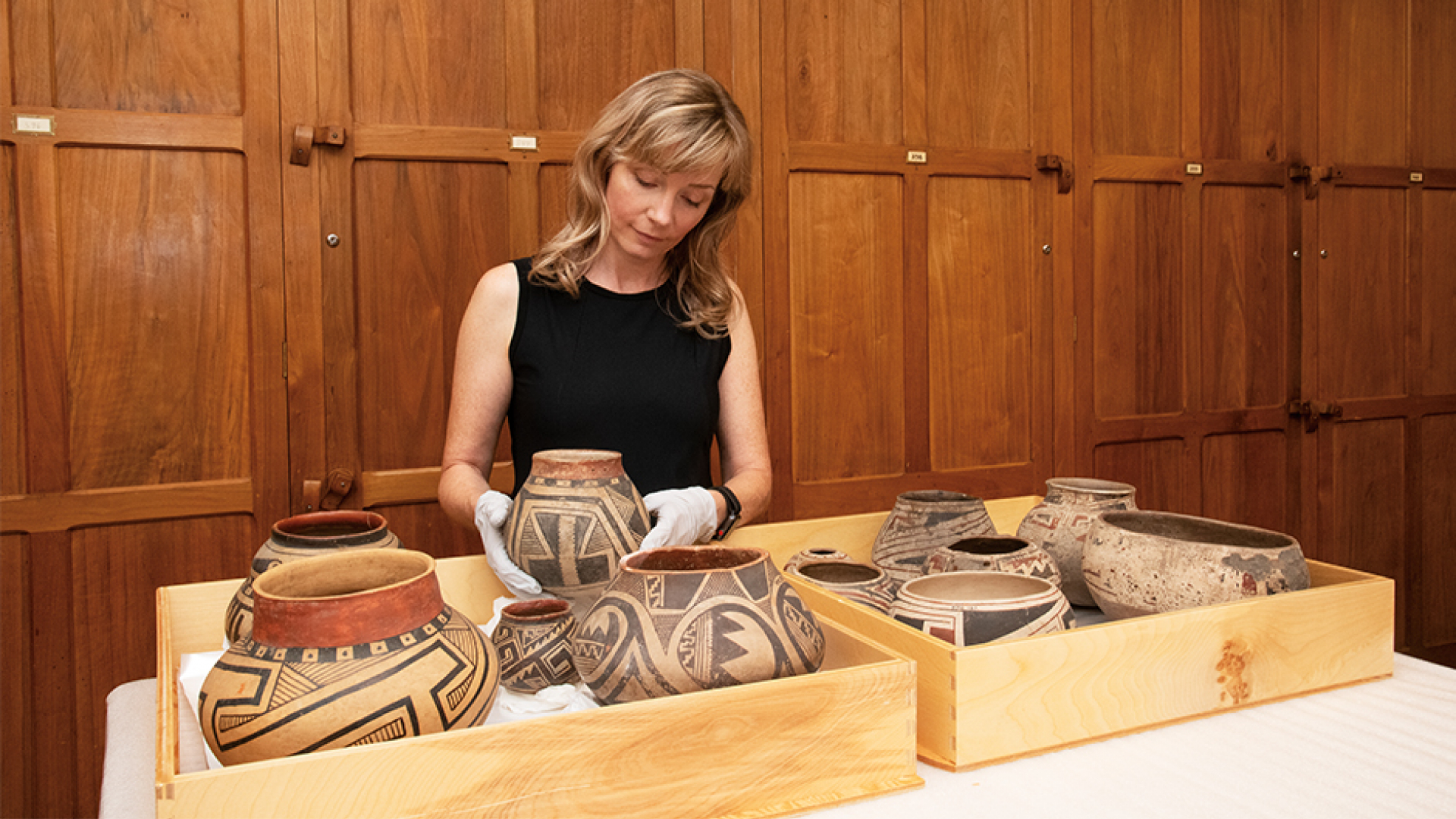Outstanding collection comes out of the vaults for the second time in nearly 100 years
For only the second time in nearly 100 years, the ROM’s outstanding collection of Casas Grandes ceramics is out of the vaults. This massive collection consists of 400 exceptional polychrome ceramics and effigy vessels dating from 1150 to 1450 CE from the important type site of Paquimé, in the Casas Grandes Valley of northern Chihuahua, Mexico. Charles Trick Currelly, the ROM’s director in 1921, acquired this collection from Edward Ledwidge, a Texas railroad agent and major collector of Mexican antiquities. Each of these ceramic vessels was coil-built and meticulously painted by the hand of a master potter.
Perhaps most astonishing is that nearly all of these ceramics are complete vessels. While it is rare to have a complete ceramic vessel that is 600–800 years old, in this collection we have 400 from one site. The site of Paquimé is most famous for these exceptional ceramics, but it is also known for the impressive multi-level pueblo architecture and for the unique practice of breeding scarlet macaws in the semi-arid desert.
The Museum’s current technician for this collection, April Hawkins, has now brought 200 of these evocative vessels out of the vaults to be photographed, researched, and catalogued for the ROM’s online eMuseum—an initiative generously supported by Nancy and Jon Love. Readers can view the collection online, as the project progresses over the next several months, at collections.rom.on.ca.


